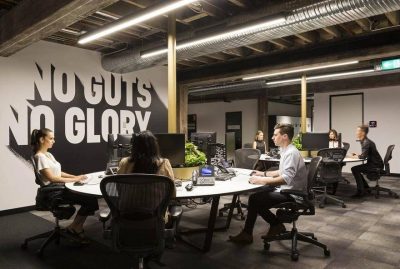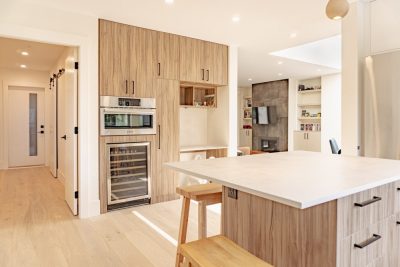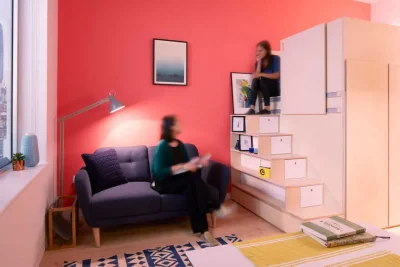
You want to make the process of buying a home easier for yourself, right? Then, start with budgeting! It is the most critical step in buying a home without financial stress. While it may seem like a straightforward process of saving for a down payment, the reality is far more complex. From understanding your financial limits to accounting for hidden expenses, budgeting requires careful planning and attention to detail. Skipping this step can lead to overspending, financial stress, or even the loss of your dream home. A well-thought-out budget empowers you to make smarter decisions, avoid common pitfalls, and ensure you’re financially prepared for both the upfront costs and ongoing responsibilities of homeownership.
The following tips will help you craft a solid budget and approach your home-buying journey with confidence.
1. Assess Your Financial Picture
Before starting your house hunt, it’s vital to understand where you stand financially. Begin by taking a close look at your income, expenses, and savings. List all your sources of income—salary, side hustles, or investments. Then, outline your monthly expenses, including essentials like rent, utilities, groceries, and transportation, as well as flexible expenses like dining out or entertainment.
Once you’ve mapped out your cash flow, identify areas where you can reduce spending. Perhaps cutting back on subscriptions or dining out less frequently can free up funds for your home-buying goals. This exercise helps you determine how much you can afford while revealing opportunities to boost your savings.
2. Calculate Your Mortgage Payments
Knowing your financial limits is key to making smart home-buying decisions. Calculating your potential mortgage payments is a great way to determine what kind of house you can afford. Key components include your down payment, monthly payments, and associated costs like property taxes and insurance.
To simplify this process, consider using the best online mortgage down payment calculator by SoFi. This tool lets you explore different scenarios by adjusting your down payment and home price to see how these changes affect your monthly payments. For instance, a higher down payment may reduce your monthly payments, while a lower one might increase them. Understanding these dynamics early on ensures you don’t overstretch your budget or underestimate how much you need to save.
3. Factor in Hidden Costs
The listed price of a home is rarely the total cost. Many first-time buyers are surprised by hidden expenses like closing costs, inspection fees, and homeowners association (HOA) dues. Closing costs alone can range from 2% to 5% of the home’s price and include expenses like loan origination fees, title insurance, and attorney fees.
Moreover, ongoing expenses such as property taxes, home insurance, and maintenance can add up over time. For example, you might need to budget for routine repairs, landscaping, or even larger renovations down the line. Accounting for these hidden costs early ensures that you’re financially prepared and avoids unwelcome surprises after moving in.
4. Save for a Larger Down Payment
While it’s possible to buy a home with a small down payment, saving for a larger one can benefit your budget in the long run. A down payment of 20% or more typically eliminates the need for private mortgage insurance (PMI), which can save you hundreds of dollars every year. It also reduces your loan amount, leading to lower monthly payments and less interest paid over the life of the loan.
If saving 20% seems too much, aim for at least 10% and continue building your savings until you’re ready to buy. To stay consistent, set up a dedicated savings account for your down payment and automate monthly contributions. This disciplined approach keeps your savings on track and reduces the temptation to dip into these funds for other expenses.
5. Check Your Credit Score and Improve It
Your credit score plays a pivotal role in determining your mortgage terms and interest rate. A higher credit score often means lower interest rates, which can save you thousands over the life of your mortgage. Start by checking your credit report for errors and disputing inaccuracies.
If your score needs improvement, focus on paying down existing debts, especially high-interest credit cards. Avoid taking on new debt or making large purchases before applying for a mortgage. Consistently paying bills on time is another surefire way to boost your score. By strengthening your credit profile, you will improve your chances of approval and secure more favorable loan terms.
6. Get Pre-Approved for a Mortgage
A mortgage pre-approval is a crucial step in the home-buying process. It gives you a clear understanding of how much a lender is willing to loan based on your financial situation. Unlike pre-qualification, which is a basic estimate, pre-approval involves a thorough review of your income, credit history, and debts.
Having a pre-approval not only sets a realistic budget for your house hunt but also makes you a more competitive buyer. Sellers are more likely to take your offer seriously if they know you’ve been vetted by a lender.
8. Avoid Major Financial Changes Before Closing
Once you’ve committed to buying a home, maintaining financial stability is critical. Lenders often reassess your financial situation right before closing to ensure nothing has changed since your pre-approval. Major financial decisions, such as taking on new debt, making large purchases, or changing jobs, can jeopardize your loan approval.
For instance, buying furniture or appliances on credit before closing might increase your debt-to-income ratio, potentially disqualifying you from the mortgage. Similarly, a job change could raise concerns about income stability. To avoid complications, hold off on big financial moves until after the home purchase is complete.
9. Budget for Future Homeownership Costs
The costs of owning a home extend far beyond the purchase price and monthly mortgage payments. Property taxes, homeowners insurance, and utilities are recurring expenses that can add significantly to your budget.
Additionally, you’ll need to prepare for ongoing maintenance and repair costs. Experts recommend setting aside 1% to 3% of your home’s value annually for upkeep. For instance, if your home costs $300,000, you should budget $3,000 to $9,000 per year for maintenance. Unexpected repairs, such as a leaky roof or major plumbing issues, can arise at any time. Factoring these costs into your budget ensures you’re financially prepared for the realities of homeownership.
Budgeting for a home goes beyond saving for a down payment—it’s about preparing for all the costs that come with homeownership. Building an emergency fund, getting pre-approved for a mortgage, and maintaining financial stability are key steps to avoid unnecessary stress and surprises. Budgeting for ongoing costs like maintenance and property taxes ensures you’re ready for the financial responsibilities that follow your purchase. With careful planning and a clear understanding of your financial limits, you can confidently navigate the home-buying process and enjoy your new home without unnecessary financial burdens.








